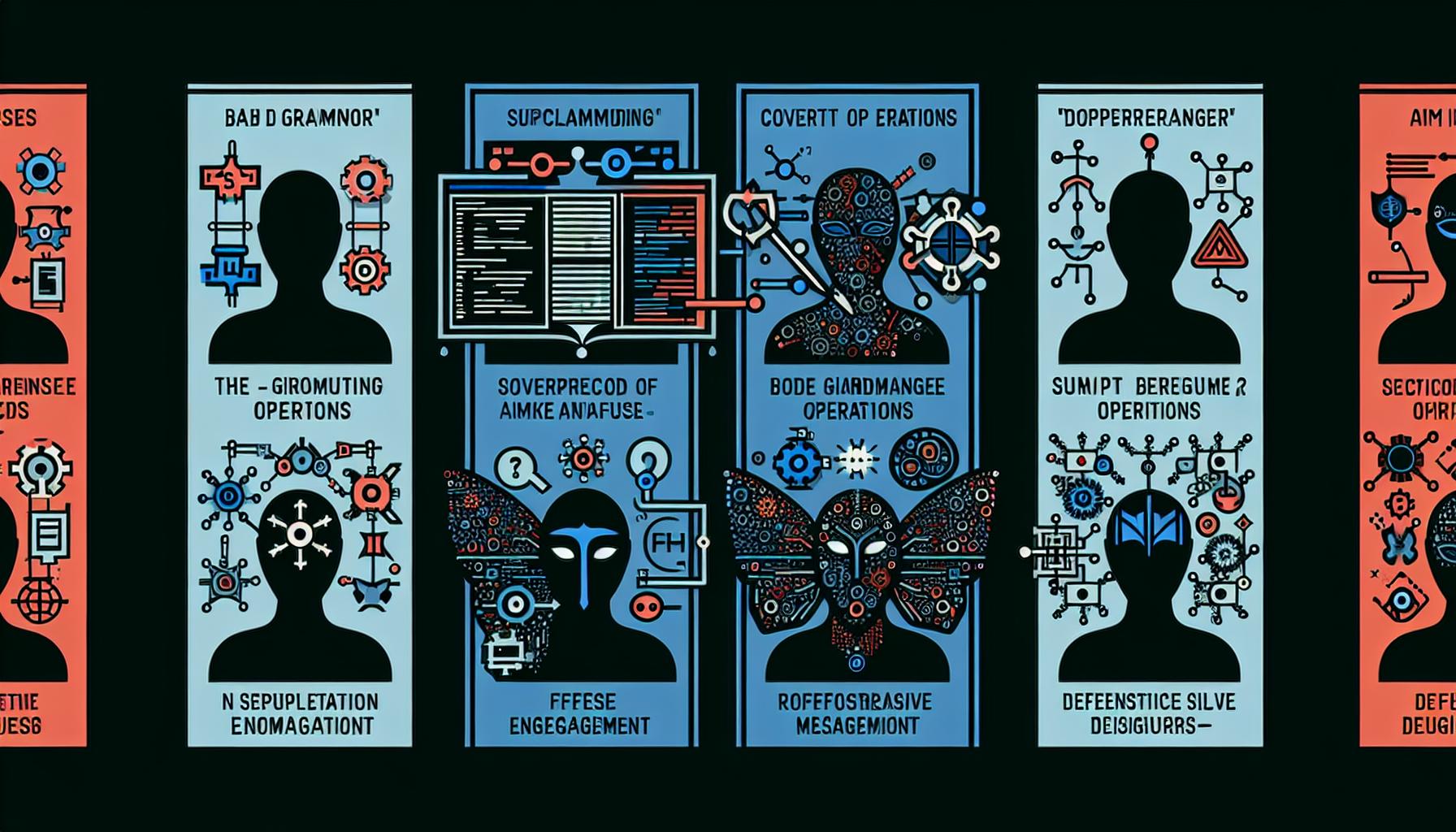How OpenAI Disrupted Five Covert Influence Operations and Enhanced Online Security

Introduction
The landscape of online influence and disinformation has evolved dramatically with the advent of Artificial Intelligence (AI). OpenAI, a pioneer in the A.I. field, has not only contributed to various beneficial A.I. applications but has also actively fought against its misuse. Over the past three months leading up to May 2024, OpenAI successfully disrupted five covert influence operations (IO) that aimed to exploit its models for deceptive online activities. This blog delves into these operations, the defensive measures employed by OpenAI, and the lessons learned from this vigilant endeavor.
Overview of the Disrupted Operations
OpenAI identified and neutralized five major covert operations that were leveraging its A.I. models to create deceptive content. These operations not only represented a threat to the credibility of digital information but also underscored the potential vulnerabilities of advanced A.I. systems.
1. Bad Grammar
This operation, originating from Russia, targeted Ukraine, Moldova, the Baltic States, and the United States. It utilized OpenAI's models for debugging code intended for a Telegram bot, alongside creating politically charged comments in both Russian and English. Despite these efforts, the operation did not achieve significant audience engagement, owing to OpenAI's proactive safety measures.
2. Doppelganger
Another Russia-based operation, Doppelganger, involved generating multilingual comments on platforms like X and 9GAG. The operation focused on translating and editing articles, generating headlines, and converting news articles into social media posts. This effort aimed at amplifying certain narratives across multiple languages but was ultimately hindered by OpenAI's safety interventions.
3. Spamouflage
Originating from China, the Spamouflage network used OpenAI's models for a variety of activities including social media research, multilingual text generation, and debugging codes for managing databases and websites. The generated content sought to sway opinions on various platforms but failed to attract genuine engagement due to OpenAI's disruptive actions.
4. International Union of Virtual Media (IUVM)
This Iranian operation focused on generating and translating long-form articles, headlines, and website tags, which were subsequently published on an interconnected website network. Despite the extensive effort, the reach and influence of these articles remained minimal thanks to OpenAI's robust safety systems.
5. Zero Zeno
An Israeli commercial company named Zero Zeno utilized A.I. models to generate articles and comments, which were then disseminated across various platforms including Instagram, Facebook, and affiliated websites. This operation sought to influence diverse political and social narratives but was largely ineffective in achieving substantial audience engagement.
Observed Trends in Covert Influence Operations
An analysis of these operations revealed several common practices employed by threat actors to exploit A.I. for disinformation:
- Content Generation: Leveraging OpenAI's services enabled the creation of large volumes of text with fewer language errors.
- Mixing Old and New: Traditional formats, such as manually written texts or copied memes, were combined with AI-generated content.
- Fake Engagement: Some actors attempted to simulate engagement by generating replies to their own posts, but these efforts did not attract genuine interaction.
- Productivity Gains: A.I. was used to enhance overall productivity, with applications like summarizing social media posts and debugging code.
Defensive Measures Implemented by OpenAI
To counter these operations, OpenAI employed a multifaceted strategy designed to enhance the safety and integrity of its A.I. models:
Defensive Design
OpenAI's safety systems are meticulously designed to impose 'friction' on threat actors. This means creating barriers that make it harder for malicious entities to generate and disseminate harmful content. These systems can detect suspicious patterns and prevent the generation of potentially harmful text.
AI-Enhanced Investigation
The use of AI-powered tools has revolutionized the process of identifying and analyzing covert operations. These tools improve the efficiency of investigations, significantly reducing the time required to detect and mitigate threats.
Industry Sharing and Collaboration
One of the key strategies in combating covert influence operations is the sharing of threat indicators with industry peers. By collaborating with other companies and the broader research community, OpenAI benefits from a wider pool of knowledge and expertise, enhancing overall threat detection capabilities.
Addressing Human Errors
Despite the advanced A.I. tools at their disposal, threat actors often made critical errors that revealed their operations. Examples include publishing refusal messages from OpenAI's models, which inadvertently exposed their misuse of A.I. services. These human errors were instrumental in the detection and disruption of the operations.
Questions and Insights
1. What specific techniques does OpenAI use in its safety systems to prevent threat actors from generating harmful content?
OpenAI employs several sophisticated techniques to maintain the safety of its A.I. models, including the imposition of friction which makes it difficult for threat actors to use the models for generating harmful content. The systems are designed to recognize and halt the creation of suspicious or malicious text, thereby preventing the misuse of A.I. technology.
2. How does industry sharing and collaboration enhance the ability to combat covert influence operations?
Industry sharing and collaboration significantly enhance the ability to combat covert influence operations by pooling resources and expertise. Sharing threat indicators and collaborating on research allows companies to stay ahead of emerging threats and benefit from the collective knowledge of the community. This teamwork approach strengthens the overall defensive posture against disinformation and malicious activities.
3. What human errors did threat actors make that were evident in their use of AI-generated content?
One notable human error made by threat actors was the publication of refusal messages from OpenAI's models. These messages inadvertently revealed the attempts to misuse AI, making it easier for OpenAI to identify and disrupt the operations. Such errors underscore the challenges faced by malicious actors in maintaining sophisticated disinformation campaigns without exposing their tactics.
Conclusion
OpenAI's commitment to safe and responsible A.I. development is evident in its proactive efforts to disrupt covert influence operations. By leveraging advanced safety systems, enhancing investigation tools, and fostering industry collaboration, OpenAI has demonstrated its ability to mitigate the threats posed by malicious actors. While challenges remain in detecting and countering multi-platform abuses, OpenAI's ongoing dedication to A.I. safety ensures that it remains at the forefront of combating digital disinformation.




